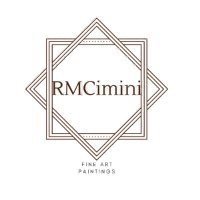The Art of Beginning Again: How Imperfection Fuels True Creativity
There's a painting on my easel that refuses to stay finished. Each time I think I've pushed it as far as it can go, something calls me back—a nagging sense that it hasn't yet revealed all it has to say. This painting has become my teacher, showing me that creativity isn't about reaching a perfect endpoint, but about embracing the courage to begin again
The Myth of the Perfect Creation
Our culture is obsessed with optimization and completion. It demands efficiency, polish, and neat conclusions. Social media feeds us endless streams of "finished" moments—perfectly curated lives, flawless artworks, success stories with tidy endings. But this obsession with perfection is creativity's greatest enemy.
The most memorable works of art, literature, and music aren't flawless. Think of Van Gogh's bold, uneven brushstrokes, or Leonard Cohen's raw, imperfect voice, or Maya Angelou's unflinching examination of pain and beauty. Their power doesn't come from technical perfection—it comes from their willingness to remain vulnerable, unpolished, and beautifully human.
When we strip away the rough edges in pursuit of perfection, we often remove the very essence that makes something alive. The heart of creativity lies not in control, but in the courage to embrace messiness and uncertainty.
Standing Apart to See Clearly
Some time ago, an artist I knew in NYC told me that our society is broken up into upper class, middle class, and lower class—except for artists. We have no class. This stayed with me partly because of the double entendre, but also because I firmly believe it to be true.
Artists—whether painters, writers, musicians, or anyone engaged in creative work—must learn to stand apart from cultural programming. We're constantly bombarded with messages about what success should look like, what beauty means, and how quickly we should produce results. But true creativity requires stepping outside these prescribed paths to see with fresh eyes.
This standing apart isn't comfortable. It's much easier to follow established formulas, to repeat what's worked before, to stay in the safe harbor of the known. But creativity thrives in the space between certainty and discovery, in that uncomfortable place where we don't yet know what we're making.
The Wisdom of Wrong Turns
Our efficiency-obsessed society encourages quick responses and direct paths. But development—both creative and personal—requires the willingness to take wrong turns. These apparent detours aren't failures; they're essential parts of the creative process.
Every "wrong turn" teaches us something. It shows us what doesn't work, yes, but more importantly, it reveals new possibilities we never would have discovered on the straight path. The painting that doesn't turn out as planned might contain the seed of something far more interesting than we originally envisioned.
When we muster the courage to leave behind the safe place, we confront messiness head-on. This confrontation isn't a flaw in our process—it's where the real magic happens.
Memory, Not History
My creative work draws from my memories, but memory isn't the same as historical fact. Memory is personal, subjective, and colored by emotion and experience. It's the difference between documenting what happened and exploring what it meant, what it felt like, how it changed us.
This distinction matters because it permits us to interpret, to reimagine, to find meaning rather than simply record. Our imperfect memories become raw material for something new, something that didn't exist before we began to explore it.
The Freedom of Being Unfinished
Perhaps the most radical act in our completion-obsessed world is to remain deliberately unresolved. To recognize that being unfinished isn't a flaw—it's a kind of freedom. It means there's still room to breathe, still space to discover something unexpected.
The painting on my easel has taught me this lesson over and over. Each time I return to it, I bring new experiences, new insights, a slightly different perspective. The painting evolves because I evolve. If I had declared it "finished" too early and moved on, we both would have missed out on deeper discoveries.
Beginning Again as a Way of Life
True growth lies not in clinging to what feels finished but in developing the resilience to start over. This doesn't mean abandoning everything and starting from scratch—it means being willing to question our assumptions, to try new approaches, to admit when our current path isn't serving us.
Starting over requires humility. It means acknowledging that we don't have all the answers, that our first attempt (or second, or third) might not be our best. But it also requires tremendous courage—the courage to face uncertainty, to risk failure, to remain open to possibilities we can't yet imagine.
The Beautiful Imperfection of Being Human
In the end, creativity and life are inextricably linked by our shared imperfection. We are not perfect beings, and the art we create reflects this truth. But rather than seeing this as a limitation, we can embrace it as our greatest strength.
Our flaws, our uncertainties, our willingness to begin again—these aren't bugs in the human system. They're features. They're what make us capable of growth, of surprise, of creating something genuinely new in the world.
The painting on my easel may never be truly "finished," and I'm beginning to think that's exactly as it should be. It remains a reminder that the most profound creative act isn't completing something perfectly—it's having the courage to keep exploring, keep questioning, keep beginning again.
In a world that demands quick answers and neat categories, perhaps the most rebellious thing we can do is remain beautifully, deliberately unresolved. To embrace the fact that we have "no class"—no neat category that contains us—and to keep making space for the unexpected, the imperfect, and the gloriously unfinished.

